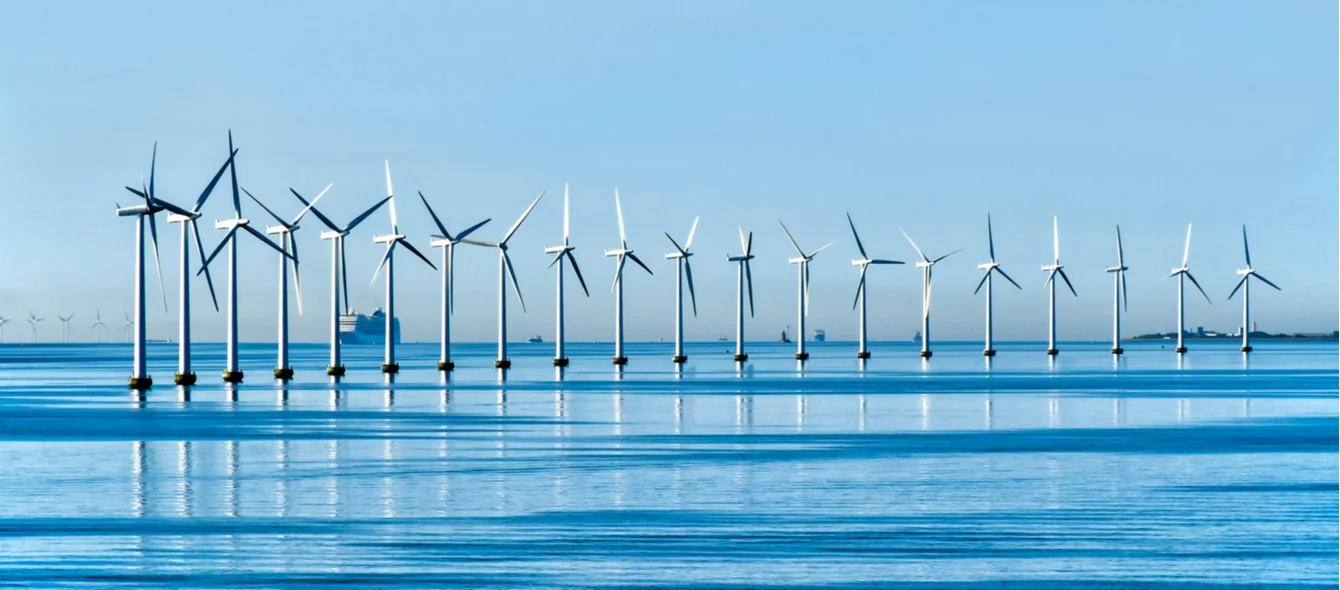Denmark is already thought to be a global player when it comes to wind power: Vestas is the undisputed market pioneer among turbine manufacturers, and Orsted is the world’s largest operator of offshore wind farms. Forty-one percent of the electricity consumed by the Danes in 2018 was generated by wind turbines – three times as much as the EU28 average and a good 50 percent more than in Ireland, which came in second.
According to news agency Reuters the Danish Parliament has now approved a project with which the country is likely to drastically increase its renewable energy quota once again: The North Sea Wind Power Hub, a wind farm with a total capacity of ten gigawatts is to be built in the North Sea. This would provide the same power as 1,000 of the world’s most powerful wind turbines. The hub is expected to start generating electricity in 2030. In total, the offshore wind turbines could supply up to ten million households with electricity. Bearing in mind Denmark has less than six million inhabitants, this means there would be a significant surplus that the country could export.
Power-to-X on a profitable scale?
But the plan has another ace up its sleeve. The energy is to be chemically stored as hydrogen and synthetic fuels, and that directly on site, out in the ocean. For this purpose, one or more man-made islands are to be built in the midst of the wind farms.
Using ‘Power-to-X’ processes, synthetic gases such as hydrogen and methane or liquid fuels such as synthetic diesel are produced with electrical energy. So far, however, the technologies have been regarded as unprofitable – partly because the existing plants are too small, making them more akin to pilot projects than anything else. As it stands, the plans for these ‘energy islands’ mainly provide for the production of hydrogen by electrolysis.
The vision of the „North Sea Wind Power Hub“
Broad consensus could attract investors
The Danes want to address precisely this issue with their Giga project – for one, so that investors can recoup their costs. According to reports by the German news magazine Spiegel Online, around 90 percent of the 200 to 300 billion Danish crowns in investments (currently around 27 to 40 billion euros) will come from private sources.
So far, the North Sea Wind Power Hub is being jointly coordinated by a consortium made up of the Dutch-German transmission system operator Tennet, Dutch gas grid operator Gasunie and Danish gas and electricity grid operator Energinet, which is in direct talks with the Danish government. The consortium is flanked by the Port of Rotterdam as strategic partner.
According to Spiegel, despite the vast amount of domestic offshore power generation expertise, the Danish government is also seeking foreign investors. These funds are likely to mainly be used to build and operate the offshore wind farm.
One of the Copenhagen’s greatest assets could be its backers: “We have the support of both the Danish trade association and Greenpeace,” says Danish Energy Minister Dan Jörgensen in the online magazine. In Parliament, eight out of ten parliamentary groups sharing more than 90 percent of the seats between them support the project.
Photo credit: © balipadma, shutterstock.com
